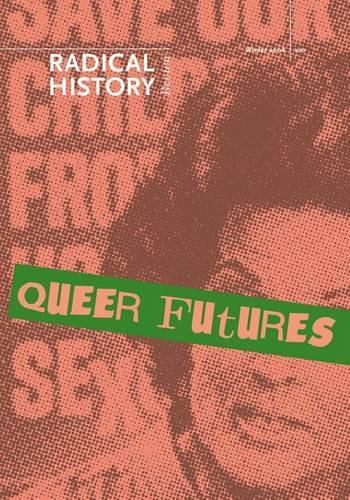Readings Newsletter
Become a Readings Member to make your shopping experience even easier.
Sign in or sign up for free!
You’re not far away from qualifying for FREE standard shipping within Australia
You’ve qualified for FREE standard shipping within Australia
The cart is loading…






In this special issue of Radical History Review, scholars and activists examine the rise of homonormativity, a lesbian and gay politics that embraces neoliberal values under the guise of queer sexual liberation. Contributors look at the historical forces through which lesbian and gay rights organizations and community advocates align with social conservatives and endorse family-oriented formations associated with domestic partnership, adoption, military service, and gender-normative social roles. Distinguished by its historical approach, Queer Futures examines homonormativity as a phenomenon that emerged in the United States after World War II and gained traction in the 1960s and 1970s. One essay compares Anita Bryant’s antigay campaigns in the late 1970s with those of current same-sex marriage proponents to show how both focus on the abstract figure of the endangered child. Another essay explores how the Gay and Lesbian Alliance Against Defamation’s organizational amnesia has shaped its often conservative agenda. Other essays include a Marxist reading of the transsexual body, an examination of reactionary politics at the core of the movement to repeal the U.S. military’s don’t ask, don’t tell policy, and a history of how safe streets patrols in the 1970s and 1980s became opportunities for urban gentrification and community exploitation.
$9.00 standard shipping within Australia
FREE standard shipping within Australia for orders over $100.00
Express & International shipping calculated at checkout
In this special issue of Radical History Review, scholars and activists examine the rise of homonormativity, a lesbian and gay politics that embraces neoliberal values under the guise of queer sexual liberation. Contributors look at the historical forces through which lesbian and gay rights organizations and community advocates align with social conservatives and endorse family-oriented formations associated with domestic partnership, adoption, military service, and gender-normative social roles. Distinguished by its historical approach, Queer Futures examines homonormativity as a phenomenon that emerged in the United States after World War II and gained traction in the 1960s and 1970s. One essay compares Anita Bryant’s antigay campaigns in the late 1970s with those of current same-sex marriage proponents to show how both focus on the abstract figure of the endangered child. Another essay explores how the Gay and Lesbian Alliance Against Defamation’s organizational amnesia has shaped its often conservative agenda. Other essays include a Marxist reading of the transsexual body, an examination of reactionary politics at the core of the movement to repeal the U.S. military’s don’t ask, don’t tell policy, and a history of how safe streets patrols in the 1970s and 1980s became opportunities for urban gentrification and community exploitation.